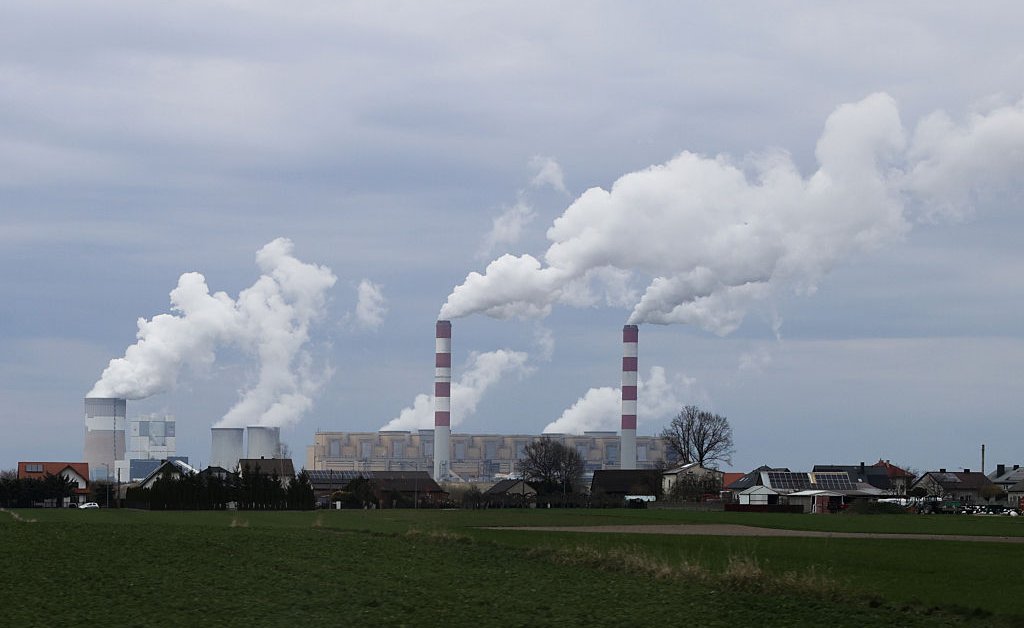Clean Air, Saved Lives: The Public Health Benefits Of Cutting Greenhouse Gas Emissions

Welcome to your ultimate source for breaking news, trending updates, and in-depth stories from around the world. Whether it's politics, technology, entertainment, sports, or lifestyle, we bring you real-time updates that keep you informed and ahead of the curve.
Our team works tirelessly to ensure you never miss a moment. From the latest developments in global events to the most talked-about topics on social media, our news platform is designed to deliver accurate and timely information, all in one place.
Stay in the know and join thousands of readers who trust us for reliable, up-to-date content. Explore our expertly curated articles and dive deeper into the stories that matter to you. Visit Best Website now and be part of the conversation. Don't miss out on the headlines that shape our world!
Table of Contents
Clean Air, Saved Lives: The Public Health Benefits of Cutting Greenhouse Gas Emissions
Air pollution is a silent killer, claiming millions of lives annually. But what many don't realize is the inextricable link between greenhouse gas emissions and public health. Reducing these emissions isn't just about saving the planet; it's about saving lives. This article explores the significant public health benefits of cutting greenhouse gas emissions, highlighting the urgent need for global action.
The Deadly Cocktail: Greenhouse Gases and Air Quality
Greenhouse gases, primarily carbon dioxide (CO2), methane (CH4), and nitrous oxide (N2O), are the main drivers of climate change. However, many of these gases are also directly harmful air pollutants. Burning fossil fuels – a major source of greenhouse gas emissions – releases a potent mix of pollutants, including particulate matter (PM2.5), ozone (O3), nitrogen oxides (NOx), and sulfur dioxide (SO2). These pollutants have devastating effects on human health.
Respiratory Illnesses and Cardiovascular Disease: The Leading Threats
Exposure to air pollution, even at low levels, significantly increases the risk of a range of serious health problems. The most prevalent are:
- Respiratory illnesses: PM2.5, for instance, can penetrate deep into the lungs, causing asthma, bronchitis, emphysema, and lung cancer. Children and the elderly are particularly vulnerable.
- Cardiovascular diseases: Air pollution contributes to heart attacks, strokes, and other cardiovascular problems by damaging blood vessels and increasing blood pressure.
- Other health impacts: Studies also link air pollution to increased risks of diabetes, neurological disorders, and even premature birth and low birth weight.
The Quantifiable Impact: Lives Saved Through Emission Reductions
Numerous studies quantify the positive impact of reducing greenhouse gas emissions on public health. For example, a [link to reputable study – e.g., a WHO report] showed that stricter air quality regulations led to a significant reduction in respiratory illnesses and premature deaths in specific regions. The economic benefits of improved public health, including reduced healthcare costs and increased productivity, are equally substantial.
Beyond Air Quality: The Broader Health Impacts of Climate Change
The consequences of climate change extend beyond air pollution. Extreme weather events – heatwaves, floods, droughts – directly impact human health, leading to injuries, fatalities, and the spread of infectious diseases. Changes in food security and water availability also contribute to malnutrition and other health problems. These effects disproportionately impact vulnerable populations.
Mitigation and Adaptation: A Two-Pronged Approach
Addressing the public health crisis stemming from greenhouse gas emissions requires a two-pronged approach:
- Mitigation: Reducing greenhouse gas emissions through transitioning to renewable energy sources, improving energy efficiency, and adopting sustainable transportation systems.
- Adaptation: Implementing measures to protect populations from the unavoidable impacts of climate change, such as early warning systems for extreme weather events and improved healthcare infrastructure.
Conclusion: A Call for Collective Action
The evidence is undeniable: cutting greenhouse gas emissions is crucial not only for the environment but also for human health. Reducing air pollution saves lives, improves quality of life, and contributes to a healthier and more sustainable future. Governments, industries, and individuals all have a vital role to play in this global effort. Let's work together to breathe cleaner air and build a healthier world for generations to come. Learn more about how you can contribute to cleaner air by visiting [link to relevant environmental organization].

Thank you for visiting our website, your trusted source for the latest updates and in-depth coverage on Clean Air, Saved Lives: The Public Health Benefits Of Cutting Greenhouse Gas Emissions. We're committed to keeping you informed with timely and accurate information to meet your curiosity and needs.
If you have any questions, suggestions, or feedback, we'd love to hear from you. Your insights are valuable to us and help us improve to serve you better. Feel free to reach out through our contact page.
Don't forget to bookmark our website and check back regularly for the latest headlines and trending topics. See you next time, and thank you for being part of our growing community!
Featured Posts
-
 Kashmir Conflict Key Events In The India Pakistan Dispute
May 10, 2025
Kashmir Conflict Key Events In The India Pakistan Dispute
May 10, 2025 -
 Jim Cramers Portfolio Moves 10 Key Stocks Ahead Of Us China Discussions
May 10, 2025
Jim Cramers Portfolio Moves 10 Key Stocks Ahead Of Us China Discussions
May 10, 2025 -
 Andreeva Vs Arango Head To Head Record And 2025 Italian Open Analysis
May 10, 2025
Andreeva Vs Arango Head To Head Record And 2025 Italian Open Analysis
May 10, 2025 -
 Nyt Spelling Bee Answers And Clues For May 8 2024 Puzzle 431
May 10, 2025
Nyt Spelling Bee Answers And Clues For May 8 2024 Puzzle 431
May 10, 2025 -
 Hot Shot Bouzas Maneiros Match Saving Lob
May 10, 2025
Hot Shot Bouzas Maneiros Match Saving Lob
May 10, 2025
